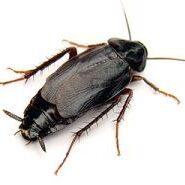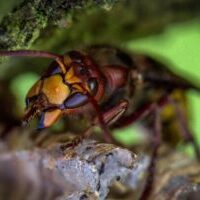
APHIDS
Aphids are small sap-sucking insects. They are among the most destructive insect pests on cultivated plants in temperate regions. The damage they do to plants has made them enemies of farmers and gardeners the world over, though from a zoological standpoint they are a highly successful group of organisms. Their success is due in part to the asexual reproductive capabilities of some species.
About 4,400 species of 10 families are known. Historically, far fewer families were recognized, as most species were included in the family Aphididae. Around 250 species are serious pests for agriculture and forestry as well as an annoyance for gardeners. They vary in length from 1 to 10 millimeters.
Natural enemies include predatory ladybirds, hoverfly larvae, parasitic wasps, aphid midge larvae, crab spiders, lacewings and entomopathogenic fungi like Lecanicillium lecanii and the Entomophthorales.
Most aphids have soft bodies, which may be green, black, brown, pink or almost colourless. Aphids have antennae with as many as six segments. Aphids feed themselves through sucking mouthparts called stylets, which are formed from modifications of the mandible and maxilla of the insect mouthparts. Most aphids have a pair of cornicles (or “siphunculi”), abdominal tubes through which they exude droplets of a quick-hardening defensive fluid containing triacylglycerols, called cornicle wax. Other defensive compounds can also be produced by some types of aphids. They also produce a sweet substance called “honeydew”. Some species of ants “farm” aphids, protecting them on the plants they eat, eating the honeydew that the aphids release from the terminations of their alimentary canals. This is a mutualistic relationship. Some ants “milk” the aphids by stroking them with their antennae.
Some aphid species have unusual and complex reproductive adaptations, while others have fairly simple reproduction. Adaptations include having both sexual and asexual reproduction, creation of eggs or live nymphs and switches between woody and herbaceous types of host plant at different times of the year.
When there is a sophisticated reproductive strategy, only females are present in the population at the beginning of the seasonal cycle (although a few species of aphids have been found to have both male and female sexes). Eggs are parthenogenetically produced without meiosis and the offspring are clones of their mother. The female then give live birth to first instar female nymphs. The offspring resemble their parent in every way except size, and are called “virginoparae”. This process iterates throughout the summer, producing multiple generations that typically live 20 to 40 days. Thus one female hatched in spring may produce thousands of descendants. Some aphids have telescoping generations. That is, the female has a daughter within her, who is already producing her own daughter. Thus a female’s diet can affect the body size and birth rate of more than two generations (daughters and granddaughters).
EXPERTS IN PEST CONTROL SINCE 1970!
Enter your information or call
(816) 279-2000
By clicking “GET ESTIMATE” I authorize Preferred Pest Control to contact me at this number. I understand I am not required to make a purchase.
PREFERRED PEST CONTROL
At Preferred Pest Control & Home Inspections, we offer comprehensive indoor and outdoor pest extermination and treatment services to stop infestations at their source. Our qualified exterminators are equipped to inspect your home environment, identify the scope of the problem, and determine the best course of action to eliminate those unwanted pests.
And when you hire us, you’ll benefit from our:
-
Reasonable pest extermination rates.
-
Easy, convenient appointment scheduling.
-
Dedication to your safety and comfort.
If you think you might have a pest problem, don’t wait to get help. Call today for more information or to request an estimate.
As the leading pest extermination provider in NW Missouri and NE Kansas, we're equipped to handle any pest that may pop up and protect your property from future problems.
AREAS WE SERVICE












